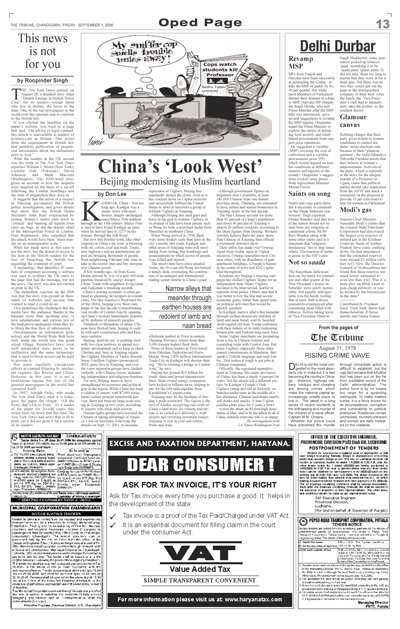This news is not for you
by Roopinder Singh
The New York Times carried, on August 28, a detailed story titled “Details Emerge in British Terror Case” for its readers’except those who live in Britain, the focus of the item. One of the top newspapers in the world took this unusual step to conform to the British law.
If you clicked the headline on the paper’s website, you went to a page that said: “On advice of legal counsel, this article is unavailable to readers of nytimes.com in Britain. This arises from the requirement in British law that prohibits publication of prejudicial information about the defendants prior to trial.”
What the readers in the UK missed was the the item bylined Don Van Natta Jr., Elaine Sciolino and Stephen Grey, which was also the work of The New York Times reporters William J. Broad (New York), Carlotta Gall (Pakistan), David Johnston and Mark Mazzetti (Washington). The 3000-word story gives an account of how the suspects were targeted on the basis of a tip-off following the London bombings and the state of preparation they were in.
It suggests that the arrest of a suspect in Pakistan pre-empted the British police investigation, and gives details that show that the British Home Secretary John Reid overreacted by raising Britain’s terror alert level to ‘critical’ and banning all liquids from carry-on bags, as did the deputy chief of the Metropolitan Police in London, Paul Stephenson, who remarked that the attack would have been ‘mass murder on an unimaginable scale.’
What has made news in this case is not the story, but the denial of access to the item to the British readers for the fear of breaching the British law regarding the contempt of court.
A technology that identifies IP numbers of computers accessing a website was used to re-direct the UK users to the page that had the message, but not the news. The story was also not carried in print in the UK.
The immediate reaction on the Web was that the story was posted on thousands of websites and anyone who wanted to read it could do so.
This underlines the challenges that the media face, the audience, thanks to the Internet more than anything else, is now international, and various law of the land prove inadequate when they try to block the free flow of information.
Developments in information technology and the World Wide Web have truly made the world into one giant wired village. Restrictive laws, even well intentioned ones, prove to be ineffective and the same technology that is used to block access can be used to provide it.
Net users regularly circumvent efforts at content filtering by intolerant regimes like Russia and China. However, in this case, it is not a totalitarian regime but one of the greatest newspapers in the world that censored itself.
In 1897, Adolph Ochs, who made The New York Times what it is today, gave the paper the slogan: “All the News that’s Fit to Print.” As a reader of the paper for 20-odd years, this writer feels let down that this time The New York Times had news that is fit to print, yet it did not print it for a section of its readers.
The Tribune: Oped. Friday, September 1, 2006
Visitors may also like to view an earlier story: Banning blogs, a big blunder.

